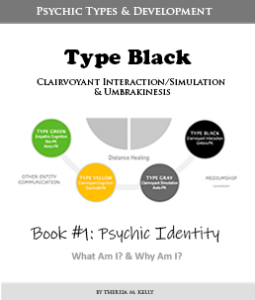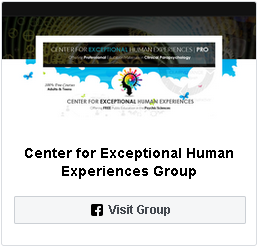- What Am I? (Type Yellow)
- Psychic “Ability” (Type Yellow)
- Psi, ESP, & Clairvoyance (Type Yellow)
- Dreams, Impressions, & Hallucinations (Type Yellow)
- Clairvoyant Cognition (Type Yellow)
- Mental Mediumship and Clairvoyant Cognition (Type Yellow)
- Intention (Type Yellow)
- Adaptive or Directive? (Type Yellow)
- Your Main Goals (Type Yellow)
- Remote Viewing & Postcognition (Type Yellow)
- How You Receive (Type Yellow)
- You Are Not Alone (Type Yellow)
- Difference Between CC & Other ESP
- Still Not Sure (Type Yellow)
- Psychokinesis (Type Yellow)
- Forms of PK (Type Yellow)
- PK or CC (Type Yellow)
- Telekinesis (Type Yellow)
- You Are Not Alone (Type Yellow)
- Having Doubts? (Type Yellow)
- One Last Question (Type Yellow)
- Your Directed Attention (Type Yellow)
- Your Needs (Type Yellow)
CLAIRVOYANT COGNITION
The two main types of extrasensory perception talked about before, telepathy and clairvoyance, may seem somewhat similar too, but are actually quite different. Telepathy involves a connection and influence between two minds, while clairvoyance involves a connection and influence between the state of a physical object, person, or situation to a mind. This means that nature, or the universe, as a whole is always aware of the physical state of affairs, which in turn communicates such information to a mind. It helps if you think of the universe as one big computer or living brain that is aware, can think, and can form memories.
This difference between telepathy and clairvoyance is taken to be a difference between two forms of experiences. The goal of telepathic experiences is assumed to involve a person’s thoughts or mental states (example: how a person feels, thinks). In contrast, the goal of clairvoyant experiences is assumed to involve a physical situation or event that may or may not include other people.
This is viewed as telepathy being “direct,” since it involves a direct connection between two minds; whereas, clairvoyance is viewed as “indirect,” because it only results in finding out about the physical situation of a thing or person, rather than directly finding out about a person through the person them self.
There are three sub-types of clairvoyance:
- Clairvoyant Cognition (CC) applies whenever information is clairvoyantly received by the experiencer from an environment, object, entity, or about a person’s situation.
- Clairvoyant Interaction (CI) applies whenever information is clairvoyantly received or spoken through an experiencer in a trance by an entity and of which involves automatic movements to some degree.
- Clairvoyant Simulation (CS) applies whenever a helpful or shifting effect is made by the experiencer, or by the experiencer’s environment or the universe as a whole.
 The main feature of clairvoyant cognition is that the experiencer can receive knowledge about the state of a person, object, or event from the universe or an entity; including spirits of the dead. In other words, an experiencer’s need for information results in learning information currently unknown by the experiencer.
The main feature of clairvoyant cognition is that the experiencer can receive knowledge about the state of a person, object, or event from the universe or an entity; including spirits of the dead. In other words, an experiencer’s need for information results in learning information currently unknown by the experiencer.
Experiencers of clairvoyant cognition retrieve information they need from the universe, in other words, you can “pick up on” the information that the universe records about itself and everything within itself including it’s past, present, and possible future. Here, the universe appears to play an intentional part in the release of the information.
 In other words, this process of you asking for information and the universe sending that information is not only a one-sided deal. Instead, the universe itself seems to have an ever-present need or desire to contribute to your wellbeing and survival.
In other words, this process of you asking for information and the universe sending that information is not only a one-sided deal. Instead, the universe itself seems to have an ever-present need or desire to contribute to your wellbeing and survival.
 So, for experiencers of clairvoyant cognition, you are an individual capable of starting clairvoyant processes yourself, allowing the universe to start the process in your favor, or
So, for experiencers of clairvoyant cognition, you are an individual capable of starting clairvoyant processes yourself, allowing the universe to start the process in your favor, or ![]()
When this process happens, you will become aware of the information received, and should be able to tell that the information did not come form your own mind or imagination. In this case, the information is received and perceived by you, but the information did not develop from a prior chair of thoughts.
 Instead, the information appears to “pop up“ into your mind and it is immediately connected to a particular event, object, or includes information ABOUT a person (you or another person), rather than FROM a person, OR is simply recognized as not originally coming from your own mind, either consciously or subconsciously.
Instead, the information appears to “pop up“ into your mind and it is immediately connected to a particular event, object, or includes information ABOUT a person (you or another person), rather than FROM a person, OR is simply recognized as not originally coming from your own mind, either consciously or subconsciously.
With clairvoyant cognition it’s more like you are watching a movie with people in it, rather than seeing a movie though their eyes.







